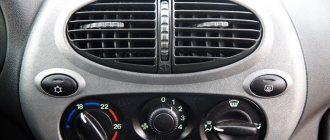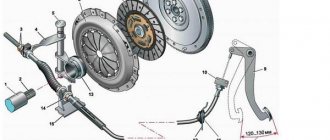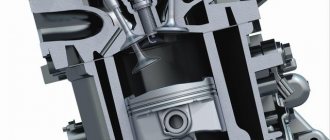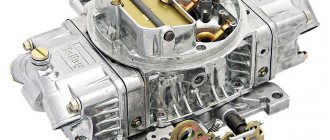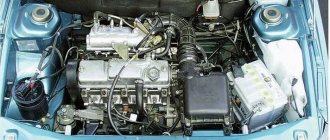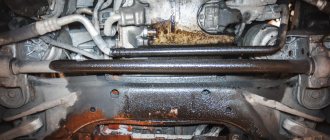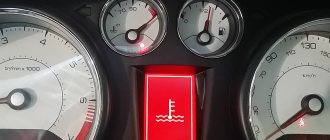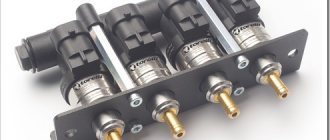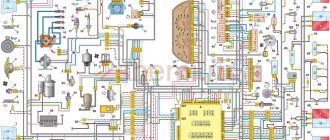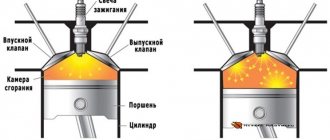Engine operation generates a lot of heat and cooling is necessary for every car. The temperature reduction achieved by air movement will not be enough, and there are special coolants. The functioning of the engine depends on their quality, so it is important to choose the right composition. There are various types of antifreeze available on the market, and you need to know their features.
Coolant
To cool the engine, you need a liquid with modified freezing and boiling values. Such features allow the vehicle to be used in severe winter or abnormal summer conditions. In colloquial vocabulary, all types of coolants are called antifreeze or antifreeze. These names conceal huge differences in composition, which affects their performance.
Antifreeze, like antifreeze, is marked by manufacturers not only by characteristics, but also by color. These features are needed to visually distinguish liquids of different compositions. So, the color of antifreeze can be blue or red, but antifreeze has many more shades. To properly understand their properties, you should study the composition of the refrigerant.
How to understand what is in the system?
Unfortunately, it is not possible to determine which composition to fill by color. It is believed that antifreeze is always blue. However, modern antifreeze manufacturers also often produce it in blue. Therefore, you will have to look for other determination methods. You can smell or taste the composition by touch. Antifreeze, as a rule, has no odor and when in contact, such a liquid is more oily. You can also determine the type of refrigerant by its compatibility with water. To do this, take a little liquid from the expansion tank and mix it with ordinary tap water in equal proportions. Afterwards, the container with the mixture must be placed in the freezer for one hour, and if after this a separation of liquids occurs or the mixed substance becomes cloudy, and a precipitate forms, then antifreeze is used in the system. There will be no such problems if antifreeze has been poured into the system. You can also recognize the composition by its resistance to low temperatures. You need to pour a little refrigerant into a separate bottle and put it in the freezer. If antifreeze is used, the liquid will freeze quickly enough; if antifreeze is used, this definitely will not happen.
How to distinguish antifreeze from antifreeze will be discussed in more detail in this video:
Published: August 26, 2022
What is antifreeze and antifreeze
Before the advent of coolants, water was used as a coolant. Boiling or freezing in the system made the machine difficult to use, and the automotive industry demanded a more effective solution. The basis of the coolant is a solution of ethylene glycol with distilled water. Organic substances or complex chemical compounds are used as additives. Due to such additives, various properties of the coolant are achieved.
Antifreeze became the first coolant that was widely available. The fuel system of the car required high-quality cooling, and water was poorly suited in terms of its physical and chemical characteristics. The use of ethylene glycol-based fluid greatly simplified the operation of the machine. A low freezing threshold was important in harsh winter conditions, and antifreeze provided an opportunity to experience all the benefits of good cooling.
What is the difference between different colors of antifreeze?
What is the difference between antifreeze of blue, green, red colors and brands G11 and G12?
To understand the question of what kind of coolant can be filled, and whether mixing them is allowed, it is worth knowing the features of antifreeze types G11 and G12.
Here's what you need to know:
G11.
Inorganic antifreezes are called glycol. The liquid base contains corrosion inhibitors that form a protective film on the inside of the engine elements.
Such additives are useful in cases where the coolant comes into contact with non-ferrous metals.
If there is no protective film on the surface, then the metal is destroyed due to the action of the glycol base.
G11 compounds last for 2-3 years, after which they require replacement.
The first representative of such antifreeze was a coolant called VW coolant G11 (manufactured by Volkswagen).
At the present stage, the company produces “hybrid” coolants under this brand, which are produced according to the following specification - VW TL 774-C.
As for other manufacturers, they follow the path of the founder, but it is not always possible to strictly follow the stated requirements.
Thus, the original G11 antifreeze does not contain phosphates, amines or borates.
As for G11 coolants from other manufacturers, they usually contain these additives. The color of the products is most often green.
G12.
Coolants that belong to the category of carboxylate antifreeze.
The already mentioned Volkswagen company previously released the product VW coolant G 12, after which it developed a specification corresponding to the new coolant (its name is VW TL 774-D).
Unlike the G11 discussed above, the twelfth type has a different effect on the motor.
It is no secret that modern power units are made without the use of copper and brass, and the main sources are steel and aluminum.
During operation, corrosive films are created on the surface of these metals, which lead to gradual destruction of engine parts.
Additives in G12 eliminate the appearance of such deposits. The new technology used in the production process is called Long Life. The advantage is that the coolant lasts longer.
But you can completely switch to a new composition only if there are no non-ferrous metals in the engine. Otherwise, G12 additives will destroy the surface.
The color G12 is usually red (less often yellow).
Application of antifreeze
Antifreeze - developed in the USSR for domestic cars. At the time of its release, the concept of antifreeze did not exist on the auto chemical market. Several types of antifreeze were created that had different freezing thresholds. In addition, color markers made it possible to quickly detect leaks or changes in fluid properties. Antifreeze was not a separate product and was part of the group of first generation antifreezes. Today there are only two types of such solutions:
- Antifreeze 40 – has a blue color and freezes at a temperature of – 40;
- Antifreeze 65 is a red liquid that can withstand frosts down to -65.
Both solutions use the same chemical composition, and the difference between them is the alcohol concentration. The difference in color serves only to highlight the temperature threshold values.
Application of antifreeze
Antifreeze is a whole group of coolants developed by large foreign companies. This composition differs from water not only in its changed freezing threshold and boiling point. Thermal expansion when exposed to cold for antifreeze is 1.5%, while water has 9%. Ethylene glycol-based fluids are most widespread, and the addition of additives has helped to significantly improve their properties.
Rationing of coolants is carried out on the basis of GOST 28084-89, but its requirements do not regulate the composition and quantity of additives. Most countries have their own government regulations, and the production of antifreeze is carried out based on their recommendations. In addition to the existence of GOSTs, various specifications are used, on the basis of which temperature limits are indicated.
Antifreeze marking
Coolant has long been known to most drivers. In addition to the familiar markings informing about the freezing temperature of antifreeze, there is also a letter code. This separation makes it possible to obtain more complete information about the composition of the coolant. There are only three types of such designation:
- A – the coolant is completely ready to be poured into the car and does not require changes in its composition;
- M – modernized composition which includes inhibitors that prevent rust;
- K is a concentrate from which coolant is independently prepared by adding distilled water.
It is after this marking that the freezing temperature, purpose and composition are indicated. This designation goes against the requirements of GOST 28084-89, which only allows marking of the finished solution or concentrate. Consequently, antifreeze manufactured according to these requirements does not have the “M” category in its name. The use of specifications in production, on the contrary, does not prohibit such designation.
Term of use
“Antifreeze” is mainly silicates and nitrites, which serve as the substances on the basis of which additives are created. Silicates provide protection for aluminum, and nitrites guarantee resistance to cavitation erosion. In the latter case, we mean a destruction process triggered by steam bubbles, the collapse of which leads to hydraulic shocks.
Hydraulic cavitation becomes one of the causes of liquid pump failure. The formation of cavities contributes to the destruction of the metal, which ultimately renders the part unusable. Manufacturers' advertising campaigns convince that antifreeze provides protection against this phenomenon, but this is a far-fetched fact. Antifreeze has no advantages over Antifreeze. Although the domestic product has a slight advantage over its foreign counterpart, since it forms a film, the thickness of which saves cylinder liners from high-temperature cavitation.
Coolants have balanced compositions. In this case, situations are possible when greater consumption of one or another component occurs. This reduces the properties of “Antifreeze”, which ceases to effectively protect the internal combustion engine from overheating and corrosion. Critical temperatures and some other factors contribute to the precipitation of silicates and nitrites, which occurs after the car has traveled 30–35 thousand km. By this time, the “cooler” almost completely ceases to perform its functionality.
As for coolants, in the manufacture of which organic salts are used, their properties are maintained throughout the entire allotted service life. Their composition remains homogeneous, additives precipitate in a minimal amount. Antifreezes produced abroad are designed for operation for 2 years with a car mileage of 100 thousand km.
Attention! Replacing antifreeze or antifreeze must be done on time. You should not wait until the coolant has completely exhausted its service life.
The effect of antifreeze on the cooling system
Antifreeze combines well with all refrigerants that have mineral additives. This feature allows the use of any domestic coolants, as well as imported analogues designated G11. With the correct density, the corrosive effect will be minimal, but a decrease in such indicators will lead to rapid contamination of the antifreeze from contact with metal parts.
Strong heating is not capable of harming the coolant, but has a detrimental effect on structural elements. Thus, softening of the rubber pipes can lead to leakage of antifreeze, which will require the need to replenish the lost volume. It should be remembered that pouring pure concentrate is strictly prohibited, and such actions can freeze the engine.
Compatibility of antifreeze and antifreeze
The coolant content may decrease due to loss of tightness in the system or physical evaporation of water. Thanks to the use of dyes, such a leak is immediately visible, but such a situation will require replenishment of antifreeze. Depending on what type of coolant is used in the car, you can select an equivalent replacement. Antifreezes are marked from G11 to G13, and their differences are quite significant.
If everything is clear with the replacement and addition of antifreeze, then antifreeze raises many questions. Coolant compatibility mainly depends on the type of additives used, and ill-considered mixing can render them unusable. If the refrigerants are incompatible, it would be correct to add distilled water, which will eliminate the need to flush the entire system. If antifreeze is recommended by GOSTs and TUs, then antifreeze is regulated by the country of manufacture. For proper operation of the cooling system, you should know everything about the compatibility of such products.
Chemical composition and properties
The coolant is based on salts of inorganic origin, which tend to form a film on the metal surfaces of the engine, protecting the power unit from the effects of ethylene glycol and preventing metal corrosion. Modern antifreeze is made with glycol ether and monoethylene glycol, is transparent and has a density of 1.112 g per cubic centimeter. The boiling point is 197 degrees Celsius, which is sufficient for use in most standard internal combustion engines.
Antifreeze contains distilled water, which makes the liquid less viscous. If necessary, car owners can independently add a small amount of distillate, adjusting the density of the composition, which allows them to reduce the cost of purchasing high-quality original antifreeze.
The presence of ethylene and propylene glycol allows the liquid to maintain its original state and prevents it from freezing at low temperatures. Propylene glycol has a pungent odor, but this chemical is a common derivative of alcohol and is completely safe for both humans and the engine.
The popularity of this type of coolant is largely due to its versatility of use and numerous advantages . These advantages include the following:
- Does not freeze at extremely low temperatures.
- Does not boil over a wide temperature range.
- Does not ignite.
- Has low viscosity.
- It is characterized by heat capacity and high thermal conductivity.
- Chemical stability during storage and operation.
- Does not cause corrosion of the engine and cooling system.
- Doesn't foam.
Antifreeze has practically no disadvantages. It has an affordable price, especially compared to other branded antifreezes, which are recommended for use on various foreign cars. The car owner will only need to take care of the timely replacement of technical fluids, which after 50 thousand km or 3 years of operation may lose their characteristics, not providing high-quality engine cooling.
Many car owners are confident that the performance characteristics and the specific type of antifreeze depend on the color of the liquid.
However, in reality, the standard formula is colorless, and to prevent mixing of compositions with different characteristics, manufacturers add dyes, which somewhat simplifies the selection and subsequent use of antifreeze.
In auto accessories and spare parts stores you can find various types of antifreeze and antifreeze. There is no significant difference between these coolants. They have virtually the same freezing point and can be made on a similar basis. The difference between foreign antifreezes and domestic antifreezes is only in the additives and additives used. However, such coolants should not be mixed with each other , since the additives contained may come into contact with each other, which leads to sedimentation.
Adding water to antifreeze or antifreeze
Changing the concentration of the solution, by deviating its values from the permissible values, can cause harm to the car’s cooling system. The calculated density of antifreeze and antifreeze will increase as moisture evaporates. In this case, adding distilled water will help restore the properties of the refrigerant, but such a measure is unacceptable if the cooling system is depressurized and antifreeze leaks.
Adding water to the manufacturer's balanced coolant solution will change its characteristics. The boiling and freezing points of antifreeze have precisely calculated values. Such actions can lead to overheating of the engine, and freezing of the fluid will cause a leak in the radiator. Adding water is justified only if it evaporates. Moreover, to perform such an operation, you should drain the coolant, mix it and only then fill it back.
Determining the quality of antifreeze
Although counterfeiting antifreeze due to its low price is not entirely profitable, such cases are far from an exception. The first thing you should pay attention to is the color. The liquid must be blue, and this color cannot affect its transparency. Brand A-65 is red, but its specific temperature conditions make it less popular. The manufacturer's containers always have a good appearance and distortions of the label or a poorly sealed lid are unacceptable.
If you have the slightest doubt, it would be a good idea to ask the seller for a certificate of conformity. Although such a procedure is not mandatory, all manufacturers prefer to voluntarily undergo certification. If such documents do not exist, it is better to forget about the questionable liquid and purchase products from a trusted supplier.
Radiator and cooling system protection
The modern automotive industry gives preference to light metals in production. The use of aluminum does not combine well with coolants such as antifreeze. Its main disadvantage is considered to be the impossibility of constructing a protective shell at high temperatures. That is why most manufacturers recommend using G12 or older generations of antifreeze as a refrigerant. Carboxylate compounds, thanks to additives, on the contrary, create gentle conditions for aluminum and prevent oxidation.
For long-term operation of the cooling system, the following rules must be observed:
- To top up, use antifreeze from the same manufacturer;
- Do not mix antifreeze of different chemical compositions and generations;
- Do not add too much water when antifreeze evaporates;
- When antifreeze runs out, flush the entire cooling system.
There is no single standard for replacing antifreeze, and when performing such operations, more attention should be paid to technical conditions than to GOST. Good antifreeze is available under different brands, and replacing it will not cause any difficulties even for a beginner.
Impact on different materials
Aluminum is becoming an increasingly popular metal in the automotive industry. Even power units are produced on the basis of its alloys. This state of affairs is somewhat problematic in terms of the use of cooling liquids. They do not protect aluminum well from destruction when loads increase and temperatures reach high values.
When reached, it completely loses its protective characteristics in relation to aluminum. It is this feature that has led leading car manufacturers to abandon the use of this type of cooler.
Carboxylate compounds demonstrate completely different properties. Dynamic corrosion testing revealed the high efficiency of antifreeze. With their help, it is possible to increase the service life of the machine by 45–60%.
Plastic, rubber and silicone are materials that are actively used in the creation of cooling systems. From the side of carboxylate compounds, no negative effects were recorded in relation to these materials. However, “Antifreeze”, if it is of high quality, also does not have a destructive effect on them.
Coolant selection and replacement
The appearance on the market of the latest generation of antifreeze with an almost lifetime guarantee has introduced innovations into the production of vehicles. For example, Volkswagen and General Motors do not require refrigerant replacement during the entire operating period. Owners of older cars should base their choice on the manufacturer's recommendations. For the owner of far from new equipment, it is unlikely to be practical to replace the usual antifreeze with G13 antifreeze, the price of which is tens of times higher.
Coolant replacement can be scheduled or ahead of schedule. The entry of exhaust gases through a faulty head gasket or air leakage at the depressurization site will lead to intensive aging of the fluid. So, brown antifreeze or its dark brown color will indicate the presence of rust in the system. To check the quality of antifreeze, you can measure the density of the solution. Thus, indicators in the range of 1.06-1.090 are considered optimal for the refrigerant. Servicing a car's cooling system is not difficult, and basic knowledge of the types of antifreeze will help you avoid problems on the road.
If you have any questions, leave them in the comments below the article. We or our visitors will be happy to answer them
Conclusion
To summarize, we can say that choosing the right coolant for your car in our time is not a problem, be it antifreeze or an expensive lobride. The problem is different: there are too many of them, and it’s easy to get confused in the variety.
The main thing is to take into account all the manufacturer’s recommendations and not chase what is cheapest, but choose a high-quality composition that will definitely not harm the car. Moreover, you will have to spend money once and for a long time.
